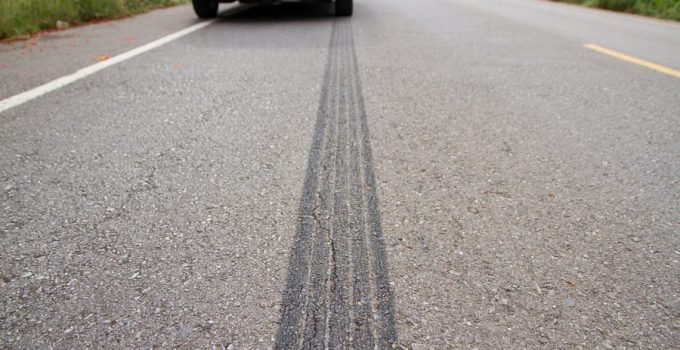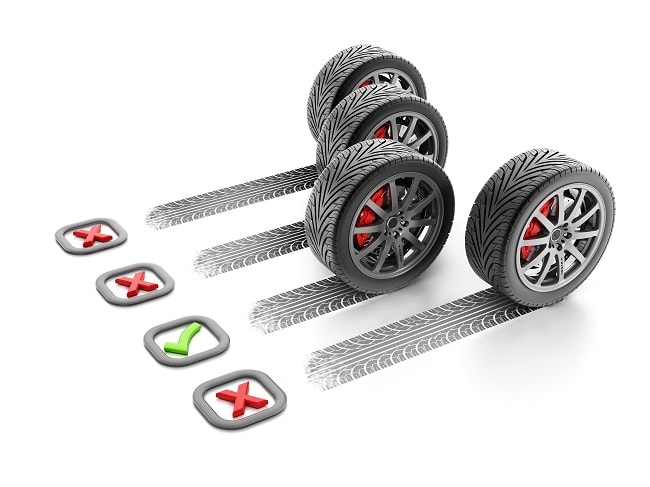
We all know how important the braking system is to overall road safety. But not only the brakes themselves, but also the condition of the tires, as well as correct lighting and properly functioning active and passive safety systems ensure that we are spared an accident on the road and, if it can no longer be prevented, possible property damage or damage even personal injuries can be reduced to a minimum.
But are there actually numbers that we can count on when emergency braking is initiated? How can we be as sure as possible that a car will come to a standstill in time before the vehicle hits an obstacle when it brakes hard? If there are numbers and calculation methods to be able to calculate a possible accident, then even more consideration can be given on the road in terms of speed and minimum distance. Because the faster a vehicle is traveling, the longer the distance it needs to come to a standstill after an emergency stop. In addition, there is always that one moment of shock that it takes for the driver to react at all. In general, one assumes a full second that elapses before the driver reacts. So if the driver sees an obstacle on the road, a full second elapses before emergency braking is even initiated. What is so fatal about it? In that one second, a vehicle continues to speed toward the obstacle unbraked.
All of these factors must be considered when calculating a vehicle's stopping distance. In the following, we will take a closer look at exactly how this calculation works.
Contents
How exactly does the formula for the braking distance look like?

The braking distance is – as already mentioned above – i.e. exactly the distance that a vehicle still covers after braking has been initiated. The length of the braking distance alone decides whether there will be an impact or whether the driver was lucky and avoided an accident.
The formula looks like this:
(vehicle speed : 10) x (vehicle speed : 10)
This is the normal braking distance. In the event of emergency braking, however, the driver applies the brakes fully, which of course leads to a stronger effect. Therefore, the rule of thumb here is that the calculated braking distance can be halved in the event of emergency braking.
Now, of course, the reaction time must not be ignored. We have already explained that in any dangerous situation, the driver needs a second to even react. In this one second nothing happens for the time being, so the vehicle races on unabated. Of course, the distance covered in that one second must not be forgotten. This is the reaction distance, which also needs to be calculated (it depends on the speed the vehicle is driving at the time) and then added to the braking distance.
The formula for calculating the reaction path is as follows:
(velocity : 10) x 3
We assume a response time of one second. However, if the driver takes longer than a second to recognize the danger and act – which unfortunately is often the case with drunk driving – so the reaction path is naturally doubled or tripled.
Finally, if the braking distance and the reaction distance are added together, we get the actual stopping distance of the vehicle. In other words, the actual distance it takes for a vehicle to stop from the moment the driver sees the obstacle on the road.
How does the calculation work of the stopping distance in practice?
So that we can give a good insight into the practice, let's take a look at the following example:
A driver is driving in the city and sticks to the specified 50 km/h that may be driven in town. Suddenly a small child runs into the street. The driver needs a moment of shock before he reacts and immediately initiates emergency braking.
The calculation of the stopping distance can then be seen like this:
(50 : 10) x (50 : 10) = 5 x 5 = 25 meters. So this is the stopping distance.
(50 : 10) x 3 = 15 meters. This is then our reaction distance.
To get the final stopping distance, we only have to add the braking distance and the reaction distance. Then we get a stopping distance of 40 meters.
In the event of emergency braking, however, we assume that the braking distance is halved. So here we would be at 25 meters : 2, i.e. 12.5 meters. The reaction path remains the same, of course, because no matter how effective the braking is, a driver still needs that one moment of shock before there is any reaction at all. So we add the reaction distance of 15 meters to the 12.5 meters braking distance. The result is then a stopping distance of 27.5 metres.
Our calculations have led us to the conclusion that if you brake hard, drive at a speed of 50 km/h and have a reaction time of one second, the vehicle will stop after 27 .5 meters to a standstill.
What should definitely be considered: if you are driving on the motorway and driving much higher speeds, the braking distance and the reaction distance will of course be significantly longer. The speed and also the reaction time are the be-all and end-all here when the question arises as to whether it is still possible to brake in time in front of an obstacle.
The conclusion and a tip from CarTipsandmore
In the following we have explained to you what exactly the braking distance is, what the reaction distance is and how these two quantities can be calculated. The actual stopping distance is then only the sum of the first two values and is therefore significantly higher. The higher the initial speed, the longer the distance you cover until the vehicle finally comes to a standstill. You should keep this in mind every time you drive on the Autobahn.
Just take your time and experiment with the braking distance formula. Calculate how many meters your vehicle will cover before it comes to a standstill when driving at 100 km/h on country roads or how long the actual stopping distance is when driving at 180 km/h on the motorway.
CarTipsandmore also advises you never to drive under the influence of alcohol or severe fatigue. Because a reaction path that is twice or three times as long usually inevitably ends in a catastrophic accident.
